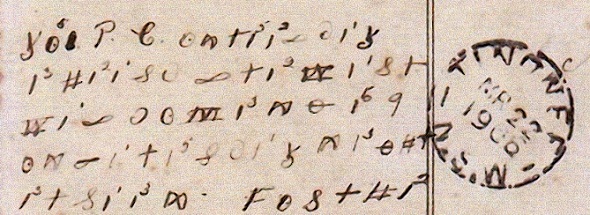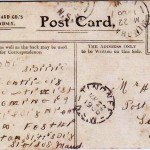Auf einer australischen Web-Seite wird eine verschlüsselte Postkarte aus dem Jahr 1906 vorgestellt. Kann sie jemand entschlüsseln?
“Are there any code experts out there who can ‘crack’ the code?”, fragt der Betreiber einer Web-Seite über die Geschichte des australischen Postwesens. Die Frage bezieht sich auf eine verschlüsselte Postkarte, die 1906 von Wingham ins 20 Kilometer entfernte Tinonee verschickt wurde. Beide Orte liegen in New South Wales.
Hier gibt es die Karte noch einmal in höherer Auflösung:
Und hier ist die Bildseite der Karte:
Ich habe den Betreiber der Web-Seite angeschrieben, doch leider funktionierte seine E-Mail-Adresse nicht. Laut Web-Seite ist die Karte ungelöst. Vielleicht schafft es ein Leser von Klausis Krypto Kolumne, den Code zu knacken.
Zum Weiterlesen: Verschlüsselte Postkarte aus dem Jahr 1906 gelöst







Kommentare (15)